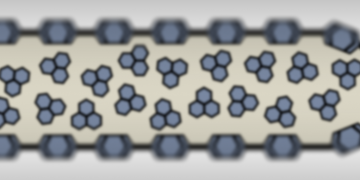
The Journey from Lab to Clinic: Zolgensma, the First Gene Therapy Treatment for Spinal Muscular Atrophy (SMA)
Translational research bridges the gap between scientific discoveries and real-world applications, transforming scientific breakthroughs into life-changing therapies. Success in this endeavor hinges on several factors, including collaboration between scientists and clinicians. A notable example of this is the approval of Zolgensma, a gene therapy for spinal muscular atrophy (SMA), which marked a significant milestone in the field of translational research.

Microphysiological Systems: A Game Changer for Drug Safety and Efficacy Studies?
In December 2022, a groundbreaking law was passed granting the U.S. FDA the authority to consider data from new alternative methods in the preclinical testing phase for new drug development. Among the new methods are 3D cell cultures that mimic human tissues and organs, known as microphysiological systems (MPS). The new law aims to improve clinical outcomes while decreasing reliance on animal testing. In this article, we discuss MPS and review data showing how they can synergize with Bio-Plex Assays.

Flow Cytometry Empowers CAR T-Cell Therapies
Chimeric antigen receptor (CAR) T cells represent the next generation of therapeutic interventions and are a major advancement in personalized disease treatment. CAR T-cell therapies utilize a patient’s own T cells to recognize and destroy cancer cells or other disease-causing cells. Find out how the ZE5 Cell Analyzer has helped overcome some of the challenges associated with development of these powerful new therapies.

Leading the Way in Our Understanding of COVID-19: Peptide Megapool Assays
Understanding how T cells respond to severe acute respiratory syndrome coronavirus 2 (SARS-CoV-2) is critical in developing long-term therapeutic approaches, as well as helping inform strategies for future pandemics. Learn how one team at the La Jolla Institute for Immunology in San Diego, California, has been using novel T-cell activation assays to understand how our immune system responds to SARS-CoV-2.

Monocytes — a Mini Review
Monocytes play key roles in mediating innate and adaptive immune responses. Here is an overview of the types, functions, process of recruitment, and the role of monocytes in disease.

Macrophage Polarization — An Overview
Macrophages are important players in the phagocytosis process in the immune system. In this detailed review, we provide an overview on the different types of macrophages, the signaling molecules involved in the polarization of M1 and M2 macrophage subsets, and more.

So, How Can the Sso7d Fusion Polymerase Technology Help Your PCR?
During a PCR reaction, it is imperative for the DNA polymerase to remain attached to the template while extending the new strand. This association is jeopardized under challenging PCR conditions and when amplifying longer DNA fragments. See how Sso7d, a small protein capable of binding with the polymerase, helps in stabilizing this association and increasing PCR efficiency.

Next Generation Computers: Transforming Cells into Autonomous Computing Devices
What do computers and cells have in common? Can cells function as computers or recording devices? Can a bacterial computer be built? Synthetic biologists have recently developed a platform called SCRIBE (Synthetic Cellular Recorders Integrating Biological Events) to convert genomic DNA into a “tape” for recording and memorizing information. This article explores many interesting aspects of autonomous cellular memory and the potential applications of such living computational systems.

Researcher Profile: Suzanne Topalian Pioneers PD-1 Inhibitor Drug to Treat Advanced Cancer
Suzanne Topalian was recognized in 2014 by Nature as one of “Ten People Who Mattered This Year” for her contributions in pioneering nivolumab, a programmed cell death protein-1 (PD-1) inhibitor that was recently approved in Japan for advanced melanoma treatment and that shifts the paradigm for a wide range of cancer therapies.

Ebola: New Techniques for Diagnosis, Treatment, and Prevention
The 2014 West African Ebola outbreak has been an unprecedented public health emergency, with thousands infected across multiple countries and cases spreading internationally. This article examines the science behind this deadly hemorrhagic fever, including its pathogenesis, detection, the challenges it presents in the field, and research into new therapies such as monoclonal antibodies.
